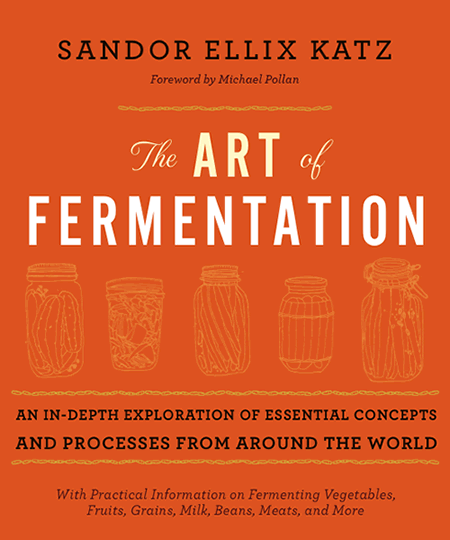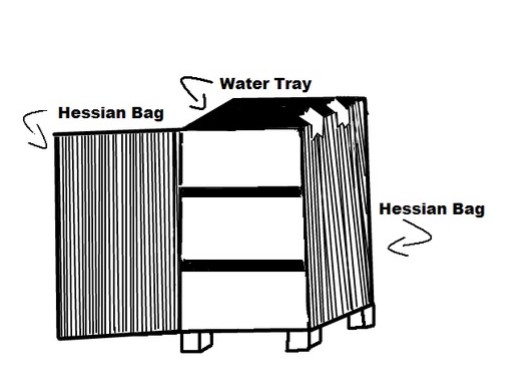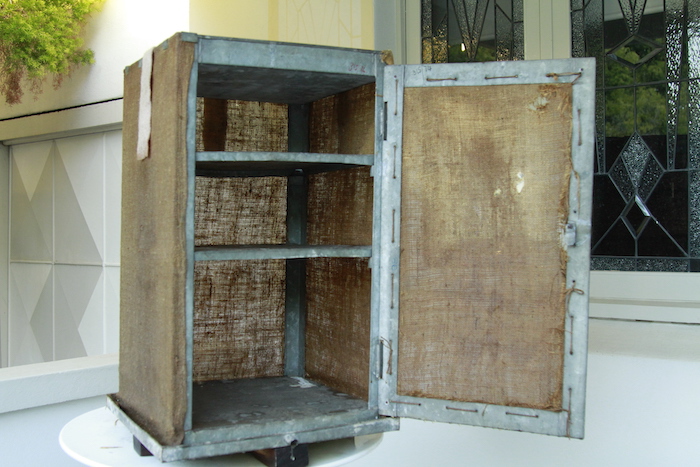
 1
1




 1
1




Gail Jardin wrote: I would love to get a 12 volt chest freezer and just freeze my own eyes
“Uncertainty is an uncomfortable position. But certainty is an absurd one.”
― Voltaire
 3
3




Sourdough Without Fail Natural Small Batch Cheesemaking A Year in an Off-Grid Kitchen Backyard Dairy Goats My website @NourishingPermaculture @KateDownham






 5
5





 1
1




"You must be the change you want to see in the world." "First they ignore you, then they laugh at you, then they fight you, then you win." --Mahatma Gandhi
"Preach the Gospel always, and if necessary, use words." --Francis of Assisi.
"Family farms work when the whole family works the farm." -- Adam Klaus
 2
2




![Filename: CSI-REEFER.jpg
Description: [Thumbnail for CSI-REEFER.jpg]](/t/161894/a/143509/CSI-REEFER.jpg)
Our inability to change everything should not stop us from changing what we can.




Mike Kenzie wrote:Over the past couple of years I have been [obsessively?] watching videos by Liziqi and several other copy-cat homestead vloggers in rural China. One thing that I have noticed is that no one in rural China appears to own a refrigerator or an ice chest. They all just apparently ferment everything for preservation. No electricity needed, regenerative paradigm approved.
What's the one thing nearly every single one of my friends have in common? They all have Sandor Kat's Art of Fermentation on their book shelf!
If you would like a "green" paradigm solution, GoSun has some affordable 12 volt cooling options. And GoSun's latest 12 volt option is a fridge and a freezer with lots of other bells and whistles that you can scoop up for a fairly decent price if you support their current crowd-funding campaign.
Warning: I have never owned a GoSun product, so I cannot attest to their quality. I just have my eye on them almost as closely as I do on Liziqi and friends! :-)




Kate Downham wrote:I used to freeze ice bricks in the freezer, and then use it in an esky/cooler. I got tired of it very quickly - I don't like dealing with ice and the mess that it makes, but maybe it would work for others.
There’s a few different things I’ve tried over the years:
The first is keeping dairy animals - when there’s fresh milk coming in every day, there’s no need to keep it at any particular temperature.
An old fashioned meat safe kept in a shady place can work, depending on the temperature outside. Another thing is evaporative cooling - there’s a ‘coolgaardie safe’ where a tray of water is placed underneath a meat safe, hessian fabric covers the meat safe and the ends of it are in the water, so that the fabric wicks up water from the tray, and the wind cools the air around it. A zeer pot, made from two terracotta pots, some damp sand, and damp fabric works in a similar way.
If you have access to a stream, spring, or well, you can keep things cold by putting them in the water inside a bucket or crate.
I’m not sure if this would work on a bus, but I know some houses have a tube running under the long side of the house, and coming up through a cupboard, with a chimney at the top of it, to direct cold air into the cupboard and warm air out of the top.
These methods have more ‘it depends’ about the temperature than modern refrigeration, so sometimes things don’t keep as well in them. I have found that salted butter keeps better than unsalted, cheeses in natural rinds or beeswax wrap keep better than cheese in plastic, and fermented or raw dairy keeps better than non fermented.
Different brands of 12v freezers use different amounts of electricity, so it’s worth doing research into it, as when I looked into it, some of them used the same amount of watts as a regular freezer, while others used hardly anything at all.





Our inability to change everything should not stop us from changing what we can.
 3
3





 3
3




Mike Kenzie wrote:Over the past couple of years I have been [obsessively?] watching videos by Liziqi and several other copy-cat homestead vloggers in rural China. One thing that I have noticed is that no one in rural China appears to own a refrigerator or an ice chest. They all just apparently ferment everything for preservation. No electricity needed, regenerative paradigm approved.
What's the one thing nearly every single one of my friends have in common? They all have Sandor Kat's Art of Fermentation on their book shelf!
If you would like a "green" paradigm solution, GoSun has some affordable 12 volt cooling options. And GoSun's latest 12 volt option is a fridge and a freezer with lots of other bells and whistles that you can scoop up for a fairly decent price if you support their current crowd-funding campaign.
Warning: I have never owned a GoSun product, so I cannot attest to their quality. I just have my eye on them almost as closely as I do on Liziqi and friends! :-)


Failure is a sign of activity and learning. It had nothing to do with under achievement
I never want to have a team member who has never failed - They are not doing!! 👍
 1
1









Our inability to change everything should not stop us from changing what we can.
 2
2




If there is one thing the Wizard of Oz has taught me, it is not to trust school teachers on bicycles.








canning meat and making jerky are definitely an a necessity in my situation. But I sure love a rare steak and a juicy burger every now and then! Since I have Kinder goats and mini pigs as my largest livestock I can stagger when I butcher animals and still get a few steaks and fresh meat and can or dehydrate the rest in a reasonable amount of time. I've only briefly looked into the propane refrigerators mainly because I'd like to simplify and just use solar but also because I'm afraid of what would happen to the food if the tank ran out and I didn't have a backup tank and I was flooded in for a few days or a week.Barb Morris wrote:I’ve been living off-grid for the last 14 years. Refrigeration has been a bit of a struggle. At the beginning, I bought a lovely looking, antique icebox, but it didn’t do what I needed. I tried ice cubes, ice blocks, wrapped the ice in newsprint, covered it in sawdust, lined the icebox with extra 1” foam insulation…..nothing I did gave me more than a day, at best.
I also tried the Zeer pot with the two clay pots, sand and water. Unfortunately, the Nova Scotia climate doesn’t lend itself to that method.
Then I picked up a small, RV 3-way fridge and used it on propane for many years. Other than the 20 lb tank that I needed to fill every 18 days or so, it served my refrigeration needs.
When the fridge pooped out, rather than have it repaired I switched to a Mobicool 12 v cooler because I had increased the size of my solar array in the years prior. Other than not having an option for frozen food, this cooler has worked very well for me and I no longer have the propane expense.
I’ll add that last summer I learned how to pressure can meat and that replaced my need for a freezer (other than wanting ice cubes and the occasional ice cream).












 1
1




Denise Cares wrote:The sides of the Cooligard Safe remind me of the strawlike evaporative cooler pads Maybe that's what they are only larger? Can someone clarify please. Also is the white strip a piece of fabric that drips water down from the water tray on the top onto the pads? How do you make sure the water hits the pads and doesn't just drip onto the floor?
Failure is a sign of activity and learning. It had nothing to do with under achievement
I never want to have a team member who has never failed - They are not doing!! 👍




Robert Ray wrote:I did a lot of looking when we started our schoolie build. I bought a Whynter refrigerator/freezer. 12-24-110 volt, mounted it on a slide out,but it is portable if we want to remove it from the bus. A true compressor reefer.
Our solar has no problem keeping up with it. Cheaper than an RV refrigerator. Not long after I bought the Whynter a warehouse that supplies some of our after market auto parts started to sell their version and the price of a similar sized copy cat product was now 1/2 of what I paid for the Whynter. Look on you tube: van life, schoolie and Whynter in your querie. Amazon sells the Whynter and CSI Black Ice is the copy cat. We're trying the Black Ice version at an off grid canoe/kayak rental site this season I'll have a first hand review of that in a month or two of use. A variety of configurations one door, two doors different sizes but all of them thermostatically controlled so you can split reefer/freezer or run as just one temp for both compartments. Whyntner also offers a dedicated taller chest freezer.
You can see the similarities of the two brands. The CSI is shown on the slide that I use in the bus. I do have an insulated case that goes over the CSI and it helps tremendously on when it runs, many of the vanlife people mention using blankets to improve efficiency.
I agree with Mike, Liziqi has a great series of videos worth watching.
 4
4




















 1
1




Denise Cares wrote:@Paul Fookes - I looked up hessian and it appears to be a form of jute or burlap. Perhaps can use those materials or even some evaporative cooler pads in a pinch? Has anyone tried making one of these using a simple wood frame?
Failure is a sign of activity and learning. It had nothing to do with under achievement
I never want to have a team member who has never failed - They are not doing!! 👍
 2
2




 2
2




Carl Nystrom wrote:My approach to off-grid refrigeration has been to use an ordinary compact chest freezer (~5 cu ft) with a thermostat that allows you to set the temperature to anything you want.
The holy trinity of wholesomeness: Fred Rogers - be kind to others; Steve Irwin - be kind to animals; Bob Ross - be kind to yourself
 3
3




Denise Cares wrote:Someone said: I’m not sure if this would work on a bus, but I know some houses have a tube running under the long side of the house, and coming up through a cupboard, with a chimney at the top of it, to direct cold air into the cupboard and warm air out of the top.
Would anyone understand what this pipe set-up is called? In what era houses was it used? I've never heard of this even in turn of the century houses which are common in my area. Was this supposed to convert the cupboard to a fridge?
Sourdough Without Fail Natural Small Batch Cheesemaking A Year in an Off-Grid Kitchen Backyard Dairy Goats My website @NourishingPermaculture @KateDownham






 1
1




 1
1




Invasive plants are Earth's way of insisting we notice her medicines. Stephen Herrod Buhner
Everyone learns what works by learning what doesn't work. Stephen Herrod Buhner
















Failure is a sign of activity and learning. It had nothing to do with under achievement
I never want to have a team member who has never failed - They are not doing!! 👍

|
Hot dog! An advertiser loves us THIS much:
The new permaculture playing cards kickstarter is now live!
https://www.kickstarter.com/projects/paulwheaton/garden-cards
|





